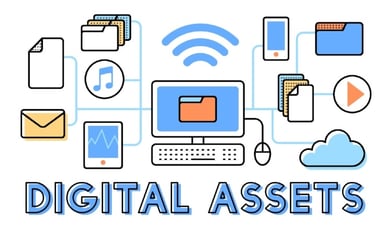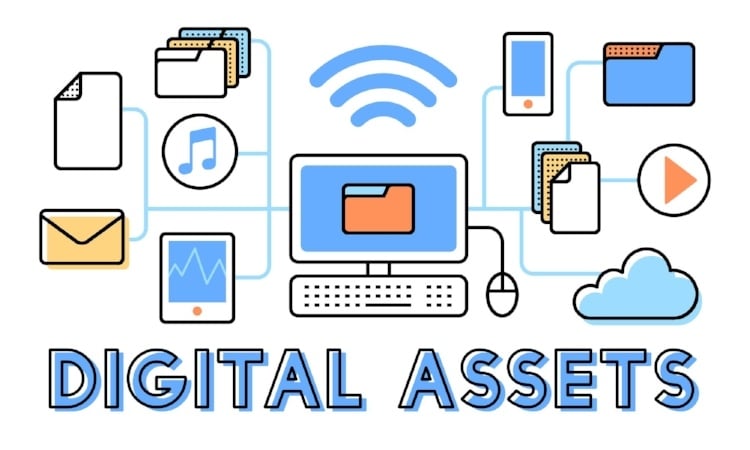
Estate planning involves more than just preparing a will or trust to distribute your assets when you die. A solid estate plan should include strategies designed to make the process of winding down your estate and transferring your assets as efficient and organized as possible. In addition to valuable financial assets like real estate, retirement accounts, investments and business assets, your estate plan should also cover your tangible personal property, your life experiences, values and lessons you want to impart to your loved ones.
In today’s electronic age, no estate plan is complete without also referencing your digital assets. This blog post will define and explain what’s included under the “digital assets” umbrella and provide steps you can take to help ensure your wishes for your digital property will be honored.
Digital Assets Part of Modern Estate Planning
Your digital assets are made up of your electronic communications and digital property (records, files, etc.) accessed through a computer, tablet, smartphone or server. For example, photos you store in the cloud, your email records, Facebook and Twitter profiles, online shopping passwords, and nearly anything else you do on the internet can be part of your digital assets.
Traditionally, estate planning focused solely on tangible assets. However, with the proliferation of electronic and cloud-based computing and storage, it is becoming increasingly important to plan for continued access to, privacy of, and/or distribution of, digital assets.
The companies storing your information online, called “custodians,” generally have restrictive terms-of-service agreements that govern who can access that information, and under what circumstances. If you die or become unable to manage your own affairs, those service agreements may authorize your loved ones to access the information you want them to have. That’s where estate planning for your digital assets comes in.
Steps to Start Planning
By educating yourself on digital assets and estate planning, you’ll be in control and will be able to proactively manage your online assets and accounts.
- Create an Inventory. Before you can include your digital assets in your estate plan, you’ll need to know what you have. Start by developing an inventory. This document should include a listing of where you hold online accounts and digital assets. When done well, your inventory can be a valuable road map for your appointed executor, trustee or other authorized fiduciary, helping them carry out your wishes. Your inventory should include user names, passwords and password “prompts” (answers to security questions or other steps.) Of course, because of the nature of this information, you should make sure the completed inventory is maintained securely and updated periodically as information changes.
- Consolidate Information. In the process of inventorying your digital assets, you may discover opportunities to consolidate information. For example, if you maintain more than one email account, consider having messages forwarded to one main account. Online photo or document repositories present another potential opportunity to streamline your recordkeeping, saving files and photos to one central location and/or to an external hard drive rather than maintaining multiple online accounts. As part of this process, spend some time thinking about which records you would want your executor or other fiduciary to be able to access, and which could be deleted.
- Investigate Providers’ Services. Contact your account custodians to determine whether they provide mechanisms or processes to facilitate transferring digital assets to others at death. For example, Facebook allows users to identify a “Legacy Contact.” Similarly, Google allows users to designate an “Inactive Account Manager.”
- Specifically Give Fiduciaries Access. Finally, work with an estate planning attorney to include language in your estate planning documents designed to authorize your executor, trustee, and/or named agent for your power of attorney to manage your digital affairs.
Plan Now for Seamless Access Later
As with planning for the management and distribution of your financial and tangible assets, there is no time like the present to plan for your digital assets. There is no question that planning ahead can make your executor's or other fiduciary's job significantly easier when the time comes.
For many people, electronic records and files make up a substantial part of the legacy they want to pass to future generations. Take control now to ensure your wishes will be honored. Your loved ones will thank you.










